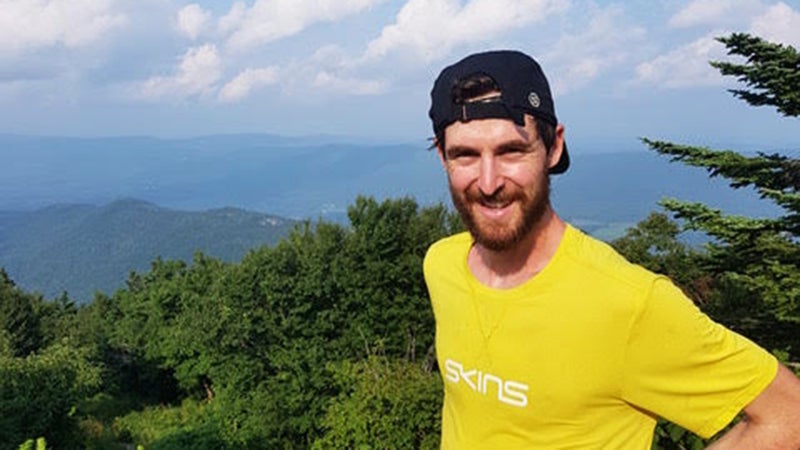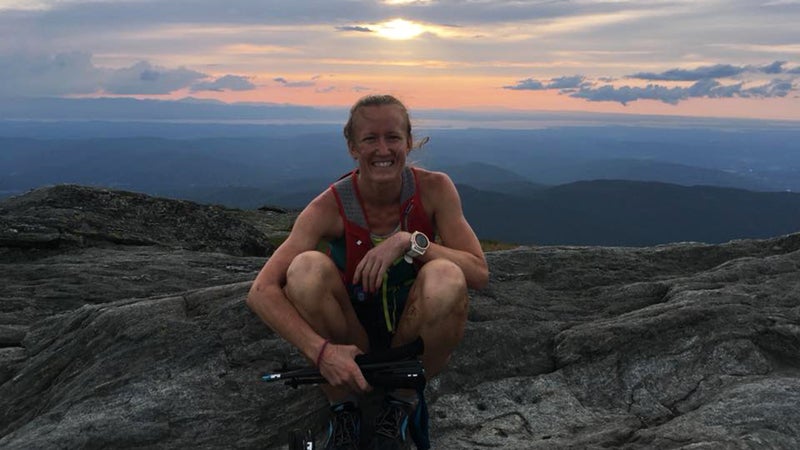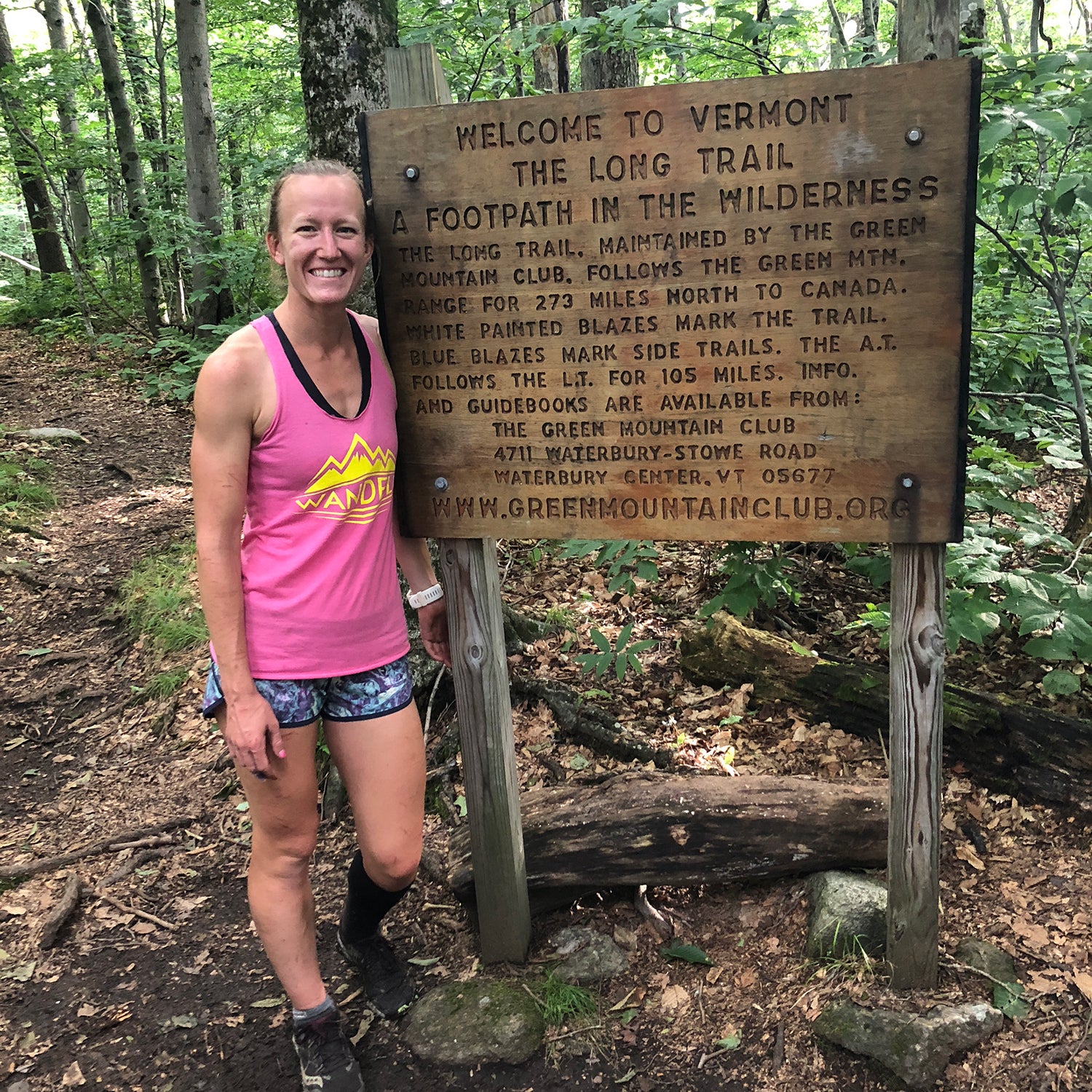This past year, hikers and trail runners set 346 fastest known time records in North America alone. Some did so on the continent’s longest and most difficult footpaths, like the Appalachian and John Muir Trails; others set records on local routes just a few miles long. Each one was undeniably impressive. But only two were deemed the Fastest Known Times of the Year (FKTOY) by a jury of FKT holders and experts in the field put together by .
For many, it seemed a foregone conclusion that Karel Sabbe would be awarded the male FKTOY for his herculean showing on the AT. The 28-year-old Belgian dentist and relative newcomer to the world of ultra-running did what many people thought was impossible: he not only bested Joe “Stringbean” McConaughy’s seemingly unbeatable 2017 record, but he did so by four full days. Sabbe’s FKT time stands at 41 days, 7 hours, and 39 minutes. He ran through some particularly awful weather in the White Mountains and was up before dawn every day, finishing his miles before sunset.

“I don’t think anyone is surprised Karel was awarded the men’s FKTOY,” says Peter Bakwin, cofounder of fastestknowntime.com and widely considered one of the most influential voices in the sport. “The Appalachian Trail FKT has been a hotly contended record for a long time, but bringing the standing record down by ten percent took Sabbe’s accomplishment to an all new level. People still can’t believe how much time he took off. He’s changed the game forever.”
Less well known but just as badass was the record set by on Vermont’s 273-mile Long Trail. The 33-year-old is best known as a professional triathlete. She’s competed in more than 30 Ironman competitions and won more than a few. But she got her start as an ultrarunner. Pursuing a record wasn’t on her radar until she saw the 2014 documentary , which narrates the FKT set on the Long Trail in 2013 by legendary runner Nikki Kimball, a multi-year recipient of the USATF’s award.

That film, says Godesky, sparked a newfound obsession in her with FKTs. She began studying the leader boards, spellbound by the accumulating records.
“I was fascinated by all of them, but I kept going back to the Long Trail: season after season, no one was taking a stab at the women’s supported record there,” she told me by phone from her home in Charlottesville, Virginia.
Meanwhile, she says, her training as a professional triathlete had started to feel a little stale. “I needed something new and different to get excited about,” she says. “The Long Trail checked all the boxes: just the right amount of distance, just the right amount of skill and punishment required.” Figuring out how to top a seemingly unbeatable time became “the best kind of puzzle,” she says. “It was a mixture of fascination and problem solving, thinking about how I could improve upon a record set by such an established name in the sport.”
It took Godesky 5 days, 2 hours, and 37 minutes—a full five hours faster than Kimball. Godesky estimates that she slept less than 20 hours throughout the ordeal. For days afterwards, she was hobbled by swollen feet and would awake out of a dead sleep screaming from nightmares about being lost or injured on the trail.
Both Godesky and Sabbe set supported FKTs—they were assisted by crew members who helped with pacing, planning, and everything from food to medical needs. The logistics involved, says Sabbe, became a big part of the record itself.
“There’s a very big mental aspect to it, and then there’s the whole unique experience of the interaction with the crew and the length of the experience,” he told Buzz Burrell in a late last year.
Burrell, who cofounded fastestknowntime.com with Bakwin, created the FKTOY awards three years ago as a way to bring more attention to the sport and to acknowledge the incredible effort that goes into setting one. Each year, a jury of about 20 past FKT holders and experts in the FKT world are assembled to rank that year’s records. The panel spans gender, generations, and geographic location, and its members are asked to rank an FKT based on criteria, including difficulty of a route, the amount of time by which a record is reduced, and the length of time a record had stood previously. Five male and female finalists make the official , along with some honorable mentions.
Winners receive no prize—not even a certificate—but that, contends Burrell, is by design. “What this is really about is the respect of one’s peers,” he says.
That, say Godesky and Sabbe, is what makes the award invaluable.
“A record on the AT doesn’t come from nothing,” Sabbe says. “It’s a year of training a hell of a lot and finding a way to make it happen. There’s a lot of time and effort going into it. To realize that the people from the FKT community realize that means a lot.”
Godesky agrees: “It’s really great to have that kind of validation. Receiving an FKTOY is like having the people you respect the most tell you that you’re legit. And if that gets other people outside and on some of these amazing historic trails, then we’re pretty much all winning.”


